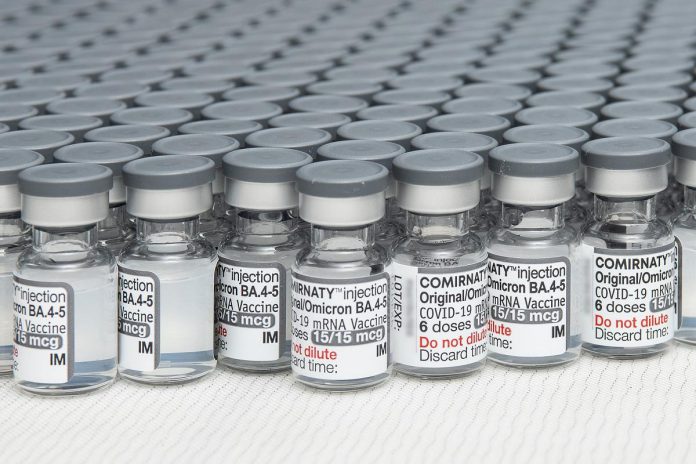
In a couple of short months, we will be coming up on three years of the COVID-19 pandemic. It is hard to believe that much time has passed. Are we tired of this? Yes. Is the virus tired of us? No.
One of the challenges of a viral pandemic is that we cannot see the enemy. That makes it easier to forget about. Can you imagine if Canadians had said, “I’m tired of this war,” and gave up three years into World War 2? As we now know, more Canadians have died from COVID-19 than from World War 2 combat deaths. Our desire to forget about and move on from COVID-19 is not justified just because the enemy is too small to see with the naked eye.
While we are in a better place in the pandemic, the COVID-19 virus continues to kill and disable residents of the Peterborough Public Health region. Earlier this month, our region moved up to Very High risk on the COVID-19 Risk Index.
The increase in community risk was determined based on increases in several key indicators, including case rates, hospitalizations, deaths, percent positive PCR tests, rapid antigen tests, and wastewater data. In combination, these indicators tell us that COVID-19 is rearing its head again this fall.
While we are learning to live in a new normal, this does not mean we should move on entirely. Our hope is that the days of school and business closures are all behind us, but those actions and other prevention methods during the pandemic were life saving. Our epidemiologists estimate that nearly 300 lives were saved in this region alone due to the preventive actions of everyone in our community. While we may not need to completely isolate ourselves again, there are many steps that each person can take every day to help prevent the further spread of COVID-19 in our community.
The personal preventive steps that saved lives at the beginning of the pandemic are the same steps that each person can take now. In the new normal, continue to monitor for symptoms, stay home if you are sick, and seek testing and treatment if you are eligible. When you choose to gather, spend more time outside or improve your indoor ventilation to move air around and filter out viruses. When you are in public, wear a tight-fitting KN95/N95 style mask when indoors around others and when the COVID-19 Risk Index level is High or Very High.
Finally, and most importantly, stay up to date on your COVID-19 vaccinations.
The COVID-19 vaccine was first released as a two-dose primary series (three doses if you’re immunocompromised). As science has told us since, protection fades over time. With this discovery, a third dose was offered, and then a fourth dose. Now, the language the province and the National Advisory Committee on Immunization (NACI) is using is “staying up to date on your vaccination.” What does this actually mean? Well, for those over the age of five it means that you should receive your primary series of two doses (four doses for those who are immunocompromised) and then receive a COVID-19 booster dose every six months.
Why should we receive a booster dose every six months? Vaccination schedules are determined by scientists who consider several factors, including the risk of getting sick (or how much COVID-19 is actually circulating), the best timeline for your protection (or your immune systems ability to fight off COVID-19 infections), and the optimal time period to ensure side effects remain rare.
For COVID-19 vaccines, the best evidence now is that you will likely need an additional dose at least every six months. The exception to this is if you have had a COVID-19 infection recently. Some research suggests that an infection can provide some protection for about three months. So it’s recommended to schedule your next dose for at least three months after a COVID-19 infection.
We are now fortunate enough to have not one but two bivalent vaccines available in Ontario.
The Moderna bivalent COVID-19 vaccine protects against the original COVID-19 virus and an earlier BA1 omicron strain, but has a slightly higher dose. In previous Moderna COVID-19 vaccines, this higher dose has shown to give slightly better protection than the Pfizer COVID-19 vaccine. The Pfizer bivalent COVID-19 vaccine protects against the original COVID-19 virus and the more recent BA4/5 omicron strain.
You may hear lots of discussion around which is better but, while the science tells us both are safe and better than the traditional vaccine dose, it isn’t clear whether one or the other will be better. This is in part because we don’t know what variant will be dominant in the future. So, for my advice, staying up to date with any bivalent COVID-19 vaccine is better than not staying up to date at all.
A dose every six months is not too bad to stay up to date on protections in an ongoing pandemic, is it? I get my car’s oil changed more frequently than that, and the vaccine is important life-saving protection for myself and those around me.


























